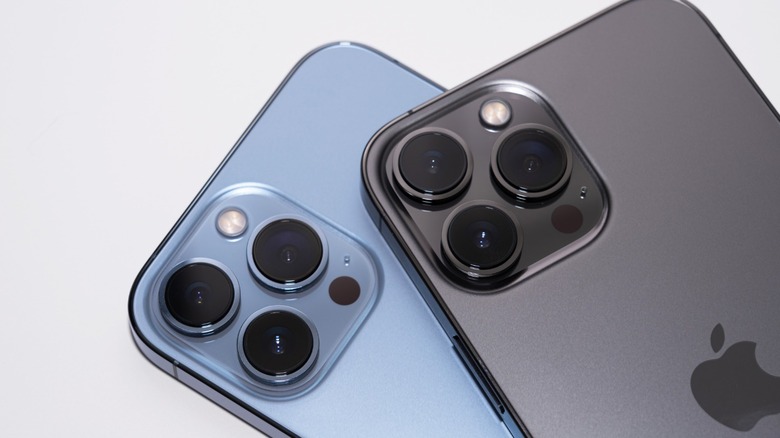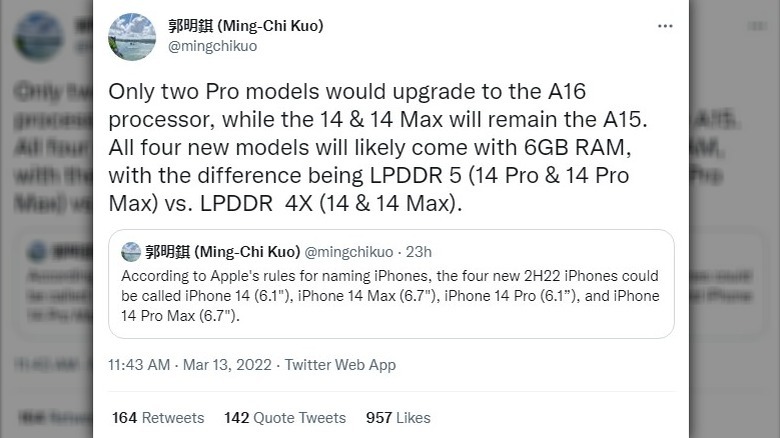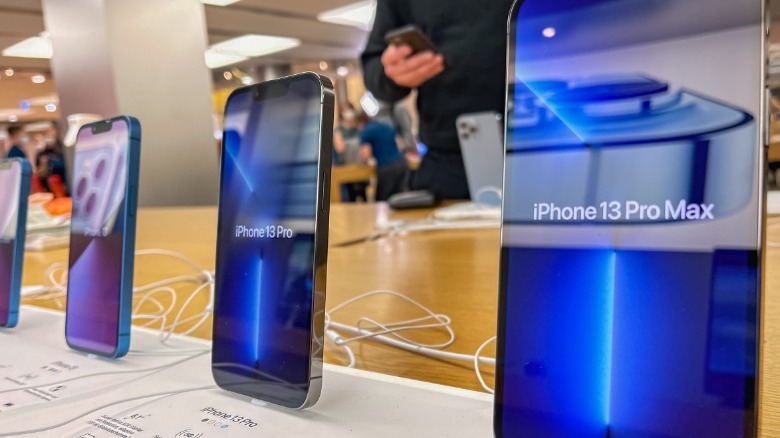Multiple iPhone 14 Models Could Come With Last Year's A15 Processor
Later on this year, Apple is widely expected to reveal a new lineup of iPhones. We see the same thing each fall, but the iPhone reveal event that happens this year might be a little different than the ones we've seen in the past. Typically, when Apple takes the stage for one these iPhone reveal events in September, it announces a new line of iPhones that come packing new hardware, most notably a new processor. That may not be the case in the iPhone 14 lineup, as Apple could be forced to rely on the CPUs already found in the iPhone 13 line.
So says noted Apple analyst Ming-Chi Kuo, who – in a follow up to a tweet in which he shared the expected names of the iPhone 14 lineup – predicts that only two of this year's iPhones will upgrade to the A16 processor, while the other two will continue using the A15 Bionic chip found in the iPhone 13 lineup. While Kuo doesn't state a reason behind this prediction, it seems fairly obvious that he's expecting the supply difficulties the consumer electronics industry has faced throughout the pandemic to continue throughout 2022.
Kuo says some iPhones will be stuck in the past
Kuo made several predictions about the iPhone 14 lineup with a series of tweets over the weekend. First, he says that the four new phones could be called the iPhone 14, iPhone 14 Max, iPhone 14 Pro, and iPhone 14 Pro Max. There is one surprise there, as it would seem that Apple could drop the mini model from its lineup and substitute that for a new "Max" model to go along with the standard iPhone 14. He also predicted the screen sizes for each model, saying that the standard iPhone 14 and iPhone 14 Pro would come with 6.1-inch displays, while the iPhone 14 Max and iPhone 14 Pro Max would come with 6.7-inch displays.
Where Kuo's predictions get particularly juicy is in the follow up to that tweet. There, Kuo predicts that only the 14 Pro and 14 Pro Max will upgrade to the A16 processor, while the standard 14 and 14 Max will stick with the A15 that powers the iPhone 13 lineup. He also says that the Pro models will use LPDDR 5 RAM while the 14 and 14 Max will use LPDDR 4X RAM, though all models will come with 6GB of memory.
Why is Apple sticking with the A15?
Though Kuo doesn't elaborate on why Apple may choose to stick with the A15 in some iPhone 14 models, Apple's reasoning doesn't necessarily need to be spelled out. We're currently in the middle of a worldwide electronics components shortage, so it's likely that Apple has already realized it won't be able to secure the components necessary to outfit all four iPhone 14 models with new A16 chips. By this point, the components needed for the A15 processors are probably a little easier to secure, making those a less costly alternative to A16 processors.
Indeed, as we were writing this article, Kuo shared another tweet that basically says it all about the current state of the smartphone industry. "There seems no reason to be optimistic about the 2022 mobile phone market," Kuo said. "Cutting orders from the highest-end (Apple) and lowest-end (Transsion) brands imply the mobile phone industry is facing structural challenges." With the shortage putting the squeeze on manufacturers in many industries and no end in sight, 2022 may be a quieter-than-normal year for smartphones and the consumer electronics market in general.


